P M Beatts
1974
Focal Press
The pervasive effects of the computer on our culture have long been observed: what has not been so expected or understood is its equally forceful and increasing tendency to merge with long-established activities and cause a realignment of their viewpoint, methods, and even basic assumptions. Such meetings with computer technology are generally exciting, but not always easy or smooth. This has been the case with communications, and is now the case with film animation. The problem is one of matching the two disciplines, one respected and established with its own technology, customs, terminology; the other an upstart newcomer, yet already strongly based in its own technology, customs terminology, and languages.
For at least eight years in the United States numerous attempts have been made to achieve a real synthesis between computing and film animation techniques. The efforts have been varied and ingenious, ranging from the work of Knowlton and Zajac at Bell Laboratories and that of John Whitney and Jack Citron, to the computer-controlled animation stands of Kar Liang and Al Stahl, and the unusual results achieved by Lee Harrison, III, of Denver.
OBJECTIVES
This chapter describes an approach somewhat similar to the pioneer efforts of Ron Baecker, at MIT. The fundamental purpose is to make it possible for the creator of the film or cartoon to use his pen or pencil in the freest and most natural fashion, and let the computer use its power and abilities to take care of the mechanics, logistics, and non-creative tasks involved in producing an apparently moving image from static art.
The project, which is still continuing at the IBM Thomas J. Watson Research Centre, at Yorktown Heights, New York, began as a joint venture between IBM and Information Concepts Incorporated, of New York City. The first objective, achieved in 1969, was to use the computer to produce animated cartoons for display on the electric scoreboard at the Oakland Coliseum during the 1969 baseball season. This, as it turns out, forms an excellent first step towards the achievement of film animation with its need for fine resolution, smooth transitions, and high quality.
PRINCIPLES
The advantage of designing for a scoreboard is that the screen is constructed in a fashion which is easy for computer people to understand. Consisting as it does of a bank of 25,600 light bulbs in a rectangle 80 bulbs high and 320 bulbs wide, it is instantly seen as an 80 × 320 matrix. Computer people are constantly playing with matrices! So, of course, are graphics people, although, despite Pissarro and the Pointillistes in art, the half-tone screen in newspaper illustration, and process plates in photo-engraving, they do not use the word. Neither, generally, do they use the notion of line-segments. However, one may consider the smallest point visible to the eye as a line segment; so a succession of such points becomes a visible line and, thus, a digital computer can draw lines. Furthermore, since the location of any point is established by two co-ordinates, merely changing the value (a digit) of either or both co-ordinates changes the point location. If this is done quickly enough, the point, or points, line, or lines appear to move.
Therefore, if the digital computer can capture the artist's lines, points, etc. as a series of locations defined by two co-ordinate numbers, it can store a huge quantity of such points, as permanently as we wish, and return them to us as often as we require, altogether in sequence, forward or backward, or any required section alone, almost instantly.
THE SYSTEM
Fortunately, there now exist both input media for the drawings and output media for the moving points. In this project, a Sylvania tablet has been used by the artist, and an IBM 2250 display unit for the output. The first does not represent too awkward a change for the artist as it is a flat surface, sloped very much like a drafting board, and the drawing instrument is a ball-point pen. Furthermore, it is equipped with registration pins so that the artist may even trace over existing, or pre-sketched, drawings or cels held in place by the pins. The second is almost as familiar to him, since it is a cathode ray tube display resembling a television screen.
Between these two points is the computer system, an IBM 1130, which is a small system as computers go, with a main storage capacity of only 16,000 words (as against 500,000 in a large System 360). It also uses a disk for auxiliary storage, the IBM 2315, which provides space for 500,000 additional 1130 words.
Another feature of the system is both essential and convenient for the artist. The keyboard of the 2250 provides him with simple function keys with which he can do such things as choose to draw black-on-white, or white-on-black, store his drawing or any part of it, reverse the frame (i.e., black turns to white), erase all or part of his work, recall any stored elements onto the display screen, number any element or change the number.
Thus, we have tried to give a picture of an artist seated at the Sylvania tablet, having decided on his projected work, drawing freely on the tablet with a ball-point pen, and seeing his drawing appear instantly on the screen of the 2250. As he makes additions to the drawing, they also appear on the screen the instant he raises his pen from the drawing surface. Having finished the frame, he depresses the appropriate key and it is permanently stored in the system. This seems trivial, as he has apparently gained nothing but the unnecessary luxury of seeing a TV display of his drawing.
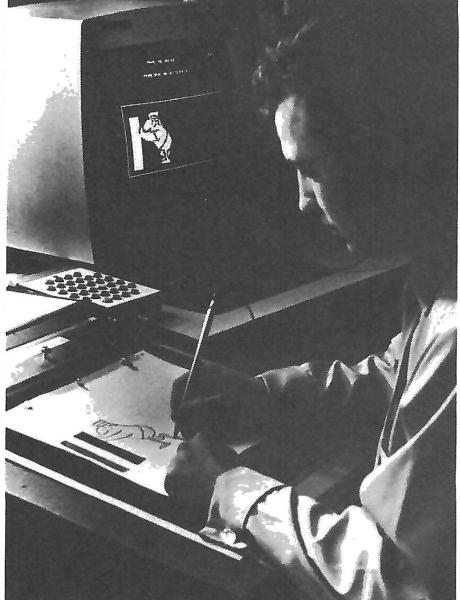
Fig 10.1: The artist, Oscar Vigano of Information Concepts Incorporated shown tracing a pre-drawn sketch on the data tablet and interactively viewing the display on the IBM 2250-4.
But the following advantages are also at his disposal:
- He can draw separately, and store separately, any number of layers for each frame.
- He can copy any layer merely by depressing a key to recall the needed layer, and can store as many copies as he wishes by giving the original the required number of frame numbers.
- He can also copy any section of a layer into other layers.
- He can alter the sequence of frames just as easily.
- He can draw a background, file it, and use it as often as he wishes in any frame(s) he wishes.
- He can produce a black-on-white, or white-on-black wipe effect using the draw-black or draw-white function.
- He can erase lines or areas of his foreground layers and restore the hidden background or underlayer by using the erase key.
- He can create special effects by reusing the colours of any segment of a layer.
Finally, he can move or scale (which has the effect of zoom-in, zoom-out, or lens change) his artwork, using the pen as a pointer to indicate start, direction, and extent of the effect chosen. This action can be spread over a selected number of frames evenly or, according to his specifications, unevenly.
We have now tried to describe those troublesome, repetitive, mechanical, detailed elements of producing conventional animation that are relegated, in this system, to a computer, because such work is child's play to a machine, and drudgery for a man. With the computer, therefore, he no longer needs to redraw the same element frame after frame, scene after scene, move each element frame by frame, carefully alter the size or scale of any element to indicate depth and distance, redraw an entire eel in order to modify one element, concern himself about 'hidden lines' provided his upper layer is predominantly white, or worry about cel registration once he has viewed the full frame.
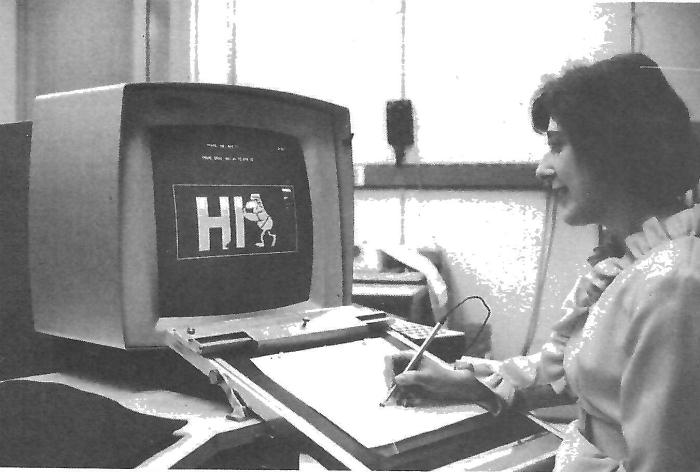
Fig 10.2: Camille Valence Junker is shown editing a frame on the data tablet and interactively viewing the display on the IBM 2250-4.
Finally, as we shall see, he does not have to wait until the film is processed to see his results. before he can redraw, reanimate, or reshoot to make corrections.
METHODS: COMPOSITION, STORAGE, REVIEWING
The entire film is considered as a series of scenes, each scene as a series of frames, each frame as a series of layers, corresponding to cels and each layer as composed of several sections. In the computer storage unit, the artist's activity builds a series of libraries each independent of the others. On completing a layer, he files it and it is stored in the layer libary. When he has completed all layers for a given frame and viewed it to his satisfaction on the 2250, he files it and it is stored in the workspace library. However, any or all of the layers of which it is composed are still available for individual recall and reuse. When he has completed and reviewed an entire scene to his satisfaction, it is filed for storage in the scene library, thus freeing the workspace for the storage of his next scene. The completed individual frames may be stored temporarily in the layer library for reuse later. Finally, even after a scene has been stored in the scene library, it may be edited or expanded, placed in the workspace library, and then refiled, incorporating the changes.
This hierarchical organization inside the computer is a great deal simpler than having to retain physical cells, frames and scenes in proper sequence with exact numerical or other guide notations. The artist, using this system, merely notes the number and general content of frames as a record.
The question of reviewing the scene to his satisfaction is an elementary one for the system. On completing a scene or a series of frames, the artist merely depresses the appropriate function key to observe the results. The sequence is then displayed on the 2250. There are two speeds for review. The first, at 2 fps, allows careful analysis of the projected action, and is available for frames still in the workspace library. The second, at 8 fps, provides a close approximation to the 16 fps speed of the scoreboard, and can be used only on sequences stored in the scene library.
For motion pictures, a faster review, if necessary, could be achieved, by using a different output screen.
INITIALIZATION
No knowledge of computing systems, programming languages, console operation, etc., is required of the artist in order to work happily with the system. One constraint or restriction is placed upon him, however, and it has, unfortunately, one of these computer labels seldom used outside that field. It is called initialization, and in reality is simple, being akin to blocking or shot-listing in conventional film work.
As the computer is going to take care of the book-keeping for the artist's work, he must, before starting to draw, indicate his needs. These are: number of frames per second (fps), number of frames in the layer and workspace libraries and the height and width of the scoreboard in light bulbs. A second set of specifications is needed, concerning the individual elements. They are scene number, frame number, layer number, layer section, frame span and predominant colour.
The reason for naming the predominant colour of each layer may seem unnecessary while we are dealing only with black-on-white. It has, however, an important function. For example, to animate various motions of separate parts of a figure, several layers may be used. When combined in one frame, if the colour of each layer is specified, the computer program will transfer the predominant colour of each layer to the same location on the background (i.e., the lowest layer selected).
The question of taking the final step from the completed animation shown on the 2250 to a projectable motion picture film of acceptable quality did not need to be, answered in the joint venture with Information Concepts Incorporated, since the required product was an animated display on a scoreboard. For this purpose, the computed data behind the animated display was transferred to computer tape, shipped to Oakland, and there used to drive the scoreboard at the stadium. Since then, however, 16 mm films have been made directly from the 2250 display. The procedure is banal and requires no explanation beyond recalling our earlier statement on the matching problems that typically arise. In this case, it is the incompatibility between a narrow elongated scoreboard field and the 3 × 4 ratio of motion picture film. To solve it, of course, one would merely change to a matrix with a 3 × 4 ratio of points.
SCOPE FOR DEVELOPMENT
Certainly, achievement of this project so far cannot be considered more than a beginning. Its value lies in its being, possibly, a beginning in the right direction, remembering the fundamental purpose we first mentioned. Effort has accordingly been directed at higher resolution of the final image, beyond that required for scoreboards, (cp. a screen finer than the 60 lines of newspaper half-tones) and is now twice as fine as the original (i.e. 160 × 640 points in the matrix). Other objectives of current work are: a dimensionally compatible matrix for motion pictures; a simple algorithm for providing movement at variable speeds along a curved as well as straight pathway; the ability to rotate images easily, in the same fashion as motion and scaling; and the capacity for producing by depressing a key, mirror images or any real or imaginary line parallel to the frame edges. The other limitations of scope are not real problems, as the 1130 was chosen as a minimum system. Thus, additional disks would increase storage and provide not only larger, but even proprietary, libraries; increased main storage would provide greater direct flexibility and capacity, especially for storage of layers, and a complete film could be on-line and available for immediate review and modification in its entirety.
Currently, to advance their own knowledge and the art itself, the group in Computer Graphics at Yorktown are, among other steps, incorporating Janice Laurie's algorithms for area fill-in, investigating the use of analysis and time-based simulation programs in addition to current methods, and using videotape for making immediately reviewable records off the 2250, rather than going to film. This will also mean that the artist can review, present to others or analyse his completed work away from the system and 2250, leaving them free for others to use in creating other animation. A further promising development being investigated is the manipulation of three-dimensional drawings.
On the computer side of the project little need be said, as the details are fully documented elsewhere. However, in addition to the computer system described, the appropriate programs had to be developed. This was itself a challenging task in view of the deliberately adopted constraints of using a small computer with limited storage, yet requiring great flexibility. The system, named ACIANS, as the acronym for Artist-Computer-Interactive-Animation-System, uses a graphics package designed at the Yorktown Research Centre, and coded in 1130 Assembler language.
All points on the Sylvania tablet touched by the artist are converted into their x-y co-ordinates, which in turn become positions in a binary matrix, where ones represent white and zeroes black. The resulting matrix is recreated on the 2250 by a horizontal scan. The obvious impossibility of containing a reasonable number of scenes or frames in the system if every layer-matrix needed retention has been elegantly solved by an effective algorithm for data compression. When a complete scene is stored, only variations from frame to frame are retained. Currently even greater economy of space is being achieved by expansion of the algorithm to eliminate redundancy in the column positions as well as rows, and to select the more efficient representation.
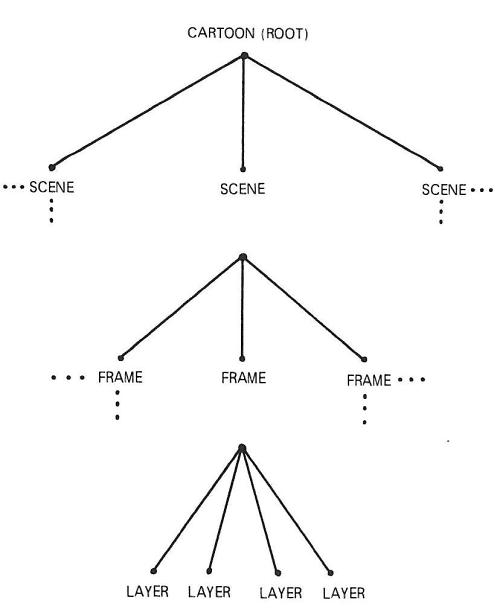
Fig 10.3: Tree structure of a cartoon in ACIANS.
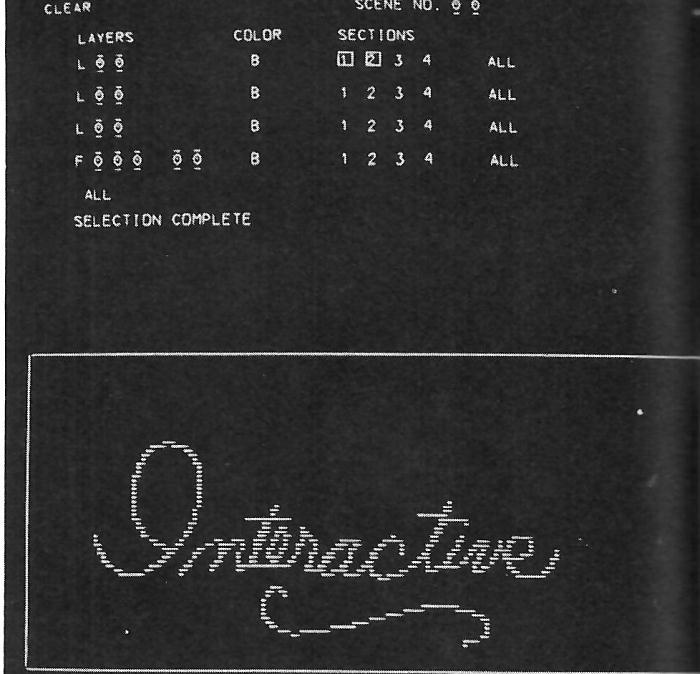
Fig 10.4: The tableau of information which contains light pen detectable elements is displayed above the drawing area (photographed from the CRT).
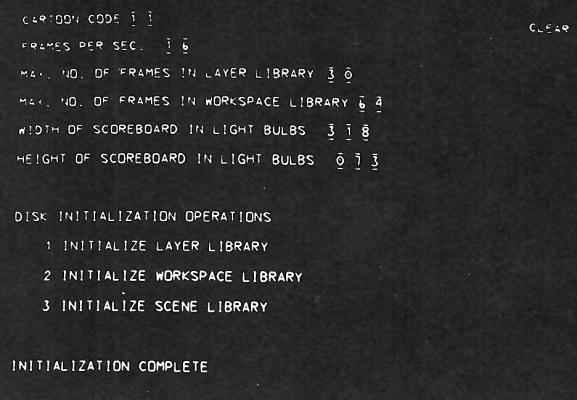
Fig 10.5: The initialization tableau contains light pen detectable elements for selection (photographed from the CRT).
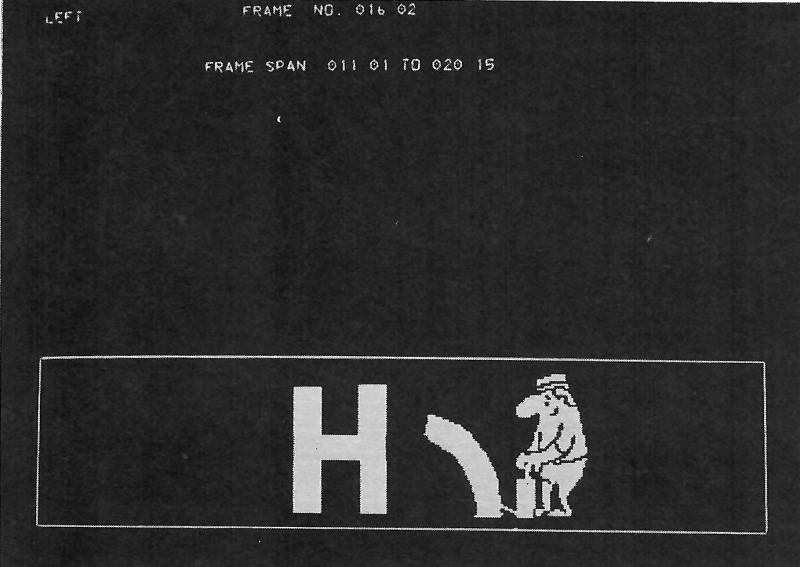
Fig 10.6: A frame of a cartoon (photographed from the CRT). Artwork done by animator, Oscar Vigano, Information Concepts Incorporated.
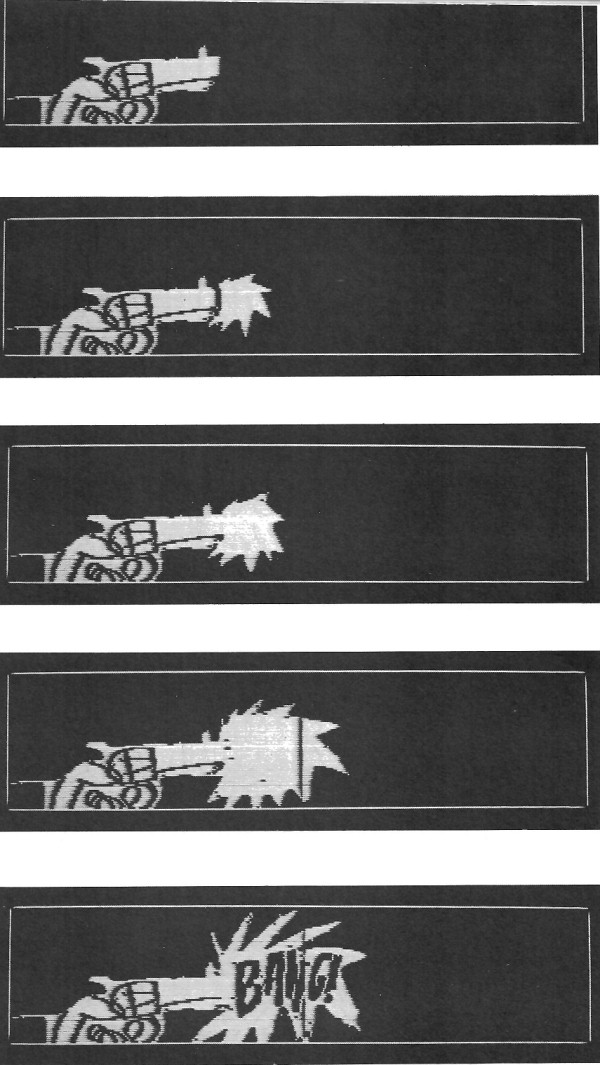
Fig 10.7: Animation sequence of a gun being fired. (Photographed from CRT). Artwork done by animator, Oscar Vigano, Information Concepts Incorporated.
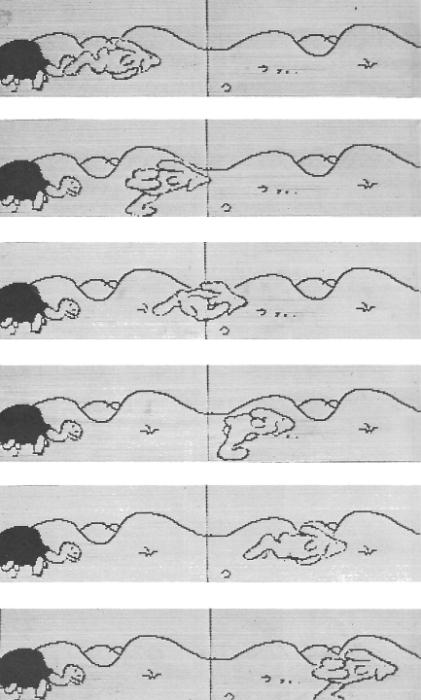
Fig 10.8: Animation sequence of a hare running. The same background is used for the entire sequence (photographed from the CRT).

